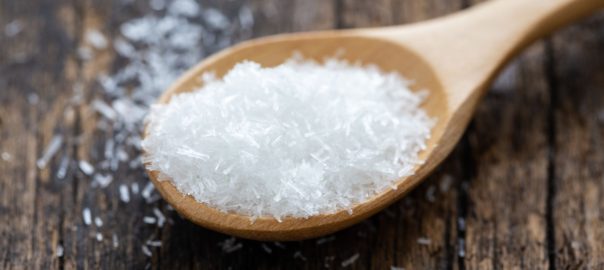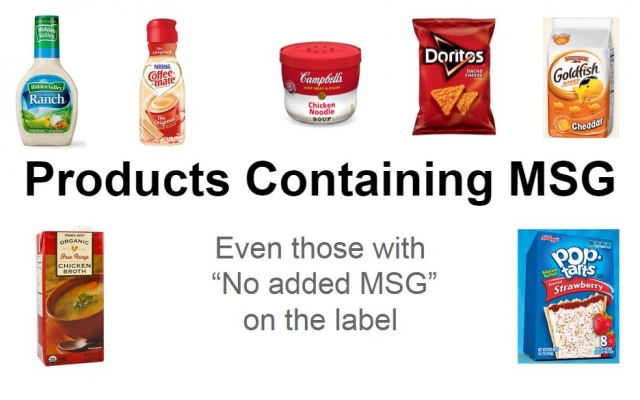If you think MSG is only in Chinese food, think again. This toxic flavor enhancer is allowed by the FDA to be hidden under dozens of ingredient names and is in all sorts of processed foods, especially canned goods, soups and low-fat foods as well as restaurant foods, beverages, chewing gums, supplements and even in packaged meats!
The side effects of MSG can be widely varied, making it difficult to connect ingestion with side effects.
People who ingest even small amounts of MSG are experiencing these side effects:
|
|
What is MSG?
The amino acid called glutamic acid (aka glutamate) exists naturally in very small amounts in certain foods such as cheese, tomatoes, mushrooms and broccoli. In its natural and whole-food form, glutamate is important to the health of our brains, gut, immune system, kidneys and pancreas. The food industry chemically concentrates glutamate, freeing it from its whole food form, turning it into monosodium glutamate (MSG) and adding it to food to enhance the flavor. This allows us to consume glutamate at much higher levels than our bodies are designed to handle, resulting in serious brain issues that can even lead to death, particularly in athletes who typically have low levels of magnesium.
A recent scientific study done on rats has shown a direct link between MSG and female infertility. The study (from the International Journal of Current Microbiology and Applied Sciences) found that not only did those rats given MSG have a significant body weight increase, the MSG induced considerable structural changes in their ovaries such as degenerated follicles and congested blood vessels of the ovaries. These abnormalities usually lead to anovulatory infertility.
How is MSG hidden on the label?
MSG occurs naturally during the chemical processing of ingredients such as hydrolyzed protein, autolyzed yeast and soy extracts. While the FDA requires that these products be listed on the ingredient label, they DO NOT require the label to specify that they naturally contain MSG. Foods with any ingredient that naturally contains MSG cannot claim “No MSG” on their packaging, but they can say “No added MSG”, even if the MSG is naturally occurring. These are marketing tricks that you need to watch out for.
What can you do to avoid buying products with MSG?
Buy only whole, unrefined, unprocessed, organic food and stay away from food with the following ingredients on their label:
|
|
|
** Non-hydrolyzed whey from organic grass-fed cows processed by low-temperature filtration or ion exchange is acceptable.
Hydrolyzed proteins can be found in bouillon products, dressings and dressing mix products, flavoring base and seasoning products, frozen food products, gravy mix products, prepared salad products, ready-to-eat meal products, sauce and marinade mix products, snack and snack mix products, soup/soup mix and dip/dip products, spread products and stuffing products.
Check out this slideshow of popular processed foods that contain MSG.
Reading the label to avoid MSG is also important for personal care products, such as shampoo, cosmetics, etc. as they may contain hydrolyzed proteins which we have learned is a code name for MSG.
For those who are significantly sensitive to MSG, check with your pharmacist as some medications use MSG as a binder or filler. If your medication does have MSG, the only way to avoid it is to consider using a compounding pharmacy.
What can you do to avoid MSG at restaurants?
MSG use in restaurants is widespread. To be proactive, ask your server which menu items are MSG-free, and when ordering, request that no MSG be added to your meal. Assume that any soup made at a restaurant has MSG or at least high amounts of table salt (which contains aluminum and should be avoided at all costs).









